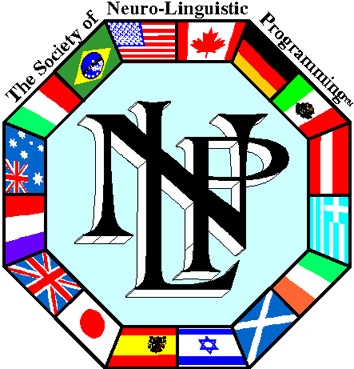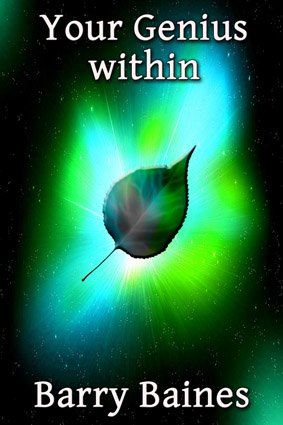Chronic pain management
NLP Techniques
By chronic pain management, of course, we mean persistent rather than intense pain, although it is difficult to discuss pain objectively; what is pain to me may be mere irritation to you or vice versa.
We start from the position that pain is a signal from the brain to let you know that something is wrong; it is a warning sign.

Many of us spend our whole lives running from feeling with the mistaken belief that you cannot bear the pain. But you have already borne the pain. What you have not done is feel all you are beyond that pain.
Kahlil Gibran
University study
A recent study from Stanford University highlighted over 1,300 possible side effects and drug interactions from prescription drugs that were not mentioned on their patient information leaflets.
The study concluded that each drug has 329 adverse reactions on average.
So if you pain is so intense that you feel you have no option but to take pain killers, then take them for as short a time as possible.
Pain is a sensation and it could be argued that we have a choice in how to interpret it.
If we suggest that we need to kill pain are we, sometimes at least, giving the pain too much credibility?
Would we be helpless without the painkilling tablets.
Different sensations leading to chronic pain management
Ellen Langer* suggests that pain consists of many different sensations and it may be that we could interpret pain simply as sensations.
Sensations, of course, do not remain the same because a throbbing headache one moment may diminish to the extent where it is barely noticeable.
So noticing the changes gives the patient the chance to control the sensations or, indeed, we may not need to control them because the pain may subside on its own.
Chronic pain management and internal representations
Internally, we make representations in the form of pictures, sounds and feelings, and we need to examine those further because if we are able to change the picture, sound or feeling, we may also be able to improve the way we feel.
If you are in pain now, it would be a good time to perform this exercise.
Think about the picture you are making in your mind and examine what we call its sub-modalities.
Do you see the picture in colour or in black and white? Is it flat, like a photograph, or three dimensional?
Are you in the picture or are you looking at the picture through your own eyes?
Is it a wide, panoramic picture or does it have a frame around it.
Is it a still picture or a movie? Is the picture bright, dark or fuzzy? Is it in or out of focus?
Now where is the picture? Have you locate it directly in front of you up or down, up to the right or left or down to the right or left? Is it close or far away?
Does the memory have sounds? Do they move quickly or slowly? Are they in stereo or mono?
Are they clear or dull? From what direction do the sounds come? Are they loud or soft?
Is the tone soft or harsh? Is it a full sound or a thin sound?
Let us move on to feelings. Can you experience any sensations from the memory?
If you do, where do you experience them in your body? You may have to consider that for a moment or two.
How intense are the feelings? Is it possible to weigh those feelings? If it is, how heavy would they be?
Imagine the feelings have a shape. What they are they? Do the feelings have any sort of texture?
Chronic pain management and the way our brain processes pain

This is the way our brain processes the information it is given.
Now think of a time when you were completely pain free and feeling great.
Go through each stage of the exercise again starting with how you see the experience.
Ask precisely the same questions of yourself and compare the answers. For example, is the picture located in the same position?
What other differences are there? Then go on, in turn, to the sounds and feelings located with the memory.
Now experiment with the submodalities. Change the position of the bad picture to the position of the good picture and see if that changes any of your pain.
Examine each of the submodalities one by one and repeat the and move the painful ones to the pleasant memory and see how much your pain is alleviated.
By experimenting in this way, you can consider how you may move a submodality to provide a better sensation.
Chronic pain management and the cure for headaches
Try this cure for uncomfortable feelings and headaches. First of all score the headache on a scale of 1-10, 1 being minimal discomfort and 10 being serious pain.
Now make a mental picture of the headache and you can choose to make it a still or a movie.
This action is the first step in you controlling the headache rather than it controlling you.
Is anything in the picture you are making in your mind appearing to intensify the headache or make it worse?
Imagine, in your mind’s eye, placing a cushion under your head. Does it now feel as bad as it did when you initially appraised it?
How do you imagine the colour of the headache? Whatever the colour is, change it to your favourite colour.
Or if the headache is already represented by your favourite colour, change it to another colour.
How does it feel now? Try changing the colours around to see if the headache gets worse or better.
Now try projecting the picture of your headache onto a movie screen and make the picture smaller and smaller. Keep making the picture smaller still until the intensity is 3 or less.
If you do encounter any difficulty with this exercise, imagine that you are sitting in the dress circle of the cinema looking down upon yourself looking at the image on the screen of yourself with a headache.
Chronic pain management and dissipating the pain
Let the picture on the screen reduce down until it is no bigger than the size of a small balloon and then let the balloon slowly start to rise up.
Let it float higher and higher still until it reaches the clouds, and as it does so the headache reduces to an intensity of 1.
Watch the balloon fade into the clouds until you can no longer see it and it finally disappears. At this stage you should have no more than the faintest memory of your headache.
What this article about chronic pain management has done is to give you more tools to cope with your pain.
At different times, different techniques will be more effective for different people.
Rotate the techniques to see what works best for you on any given occasion.
*Counterclockwise published by Hodder
Gain FREE access to my self-confidence video
To gain free access to my self-confidence video enter your email address and first name in the box below. This will also keep you up-to-date with my free newsletter Inspirations.
As a bonus for subscribing you'll receive the first three chapters of my book Towards Success, where you can learn more about NLP techniques, from Anchors to Modelling, and my 50 favourite inspirational quotations.
Return from Chronic pain management to
The Secret of Mindpower & NLP Home
Return to Site Search & Contents Page

Change your life in just 5 weeks
Discover the pathway to success with my online video course. Learn more

Download NEW ebook Your Genius Within and find out how to uncover your own inner genius

NLP Articles
- Anchors
- Anchors explained
- Anger Management tips
- Anxiety Panic Attacks
- Beating disappointment
- Beating drug addiction
- Best self-help book
- Big events
- Body control module
- Body language attraction
- Body language flirting
- Body language in communication
- Body language interpretation
- Body language of a liar
- Body language signs
- Boost self-confidence
- Building Rapport
- Changing bad habits
- Changing beliefs
- Changing States
- Children
- Christmas (Holidays)
- Christmas & New Year greetings
- Chronic pain management
- Conquering Fear
- Crohn's Disease
- Cure for a Phobia
- Deal with your fear
- Deletion
- Determining your destiny
- Developing your senses
- Disaster to Triumph
- Distortion
- Drawing the line
- Embedded Commands
- Enthusiasm
- Exams
- Expecting the Best
- Expert Relationship Advice
- Eye accessing cues
- Fear of driving
- Fear of elevators
- Fear of flying
- Fear of the dentist
- Fear of vomiting
- Fear, Mental Blocks & Hesitation
- Fear, Uncertainty and Doubt
- Fight or flight response
- Finding Solutions
- Forever Worried?
- Friendly persuasion
- Generalisation
- Get the life you want
- Getting lucky
- Getting over your past
- Goal Setting Tips
- Goal Setting Tools
- Goal Setting Tools, More
- Great self-help books
- Grief
- Happy retirement
- Healthy Mind
- High blood pressure
- How long will I live?
- How to be lucky
- How to read body language
- Hypnosis & NLP
- Hypochondria
- Imagining perfect performance
- Improving speed reading
- Instant Mood Lift
- Interviews
- Knowing yourself
- Learn NLP
- Life Values
- Maintaining weight loss
- Make you thin
- Making it happen
- Managing change
- Meddling Mom
- Meeting People
- Mental rehearsal techniques
- Meta Model
- Metaphor
- Modelling
- Modelling Genius
- More NLP techniques for weight loss
- NLP Books
- NLP Courses
- NLP Practitioner Course
- NLP Master Practitioner Course
- NLP Secret
- NLP jargon buster
- NLP Modelling helped me
- OCD symptoms
- OCD treatment
- Overcoming low self-esteem
- Overcoming stage fright
- Pacing & Leading
- Persuasion
- Presuppositions
- Presuppositions (2)
- Problem solving
- Public Speaking
- Reaching agreement
- Reframing
- Self-confidence
- Self limiting beliefs
- Self-image
- Sportsmen Guide
- Stage fright tips
- Stammering
- States
- Stop binge eating
- Stop Smoking
- Subliminal Persuasion
- Success Principles
- Techniques for persuasion
- Techniques for weight loss
- The meaning of NLP
- Time & NLP
- Towards
- Towards & Away
- Ulcerative colitis
- Weight Loss
- Weight loss techniques
Articles on HYPNOSIS:
- Big events
- Conversational Hypnosis
- Covert hypnosis
- Deepening self-hypnosis
- Depression Hypnosis
- Handshake interrupt
- How to do self-hypnosis
- How to hypnotise your audience
- Hypnosis and Weight Loss
- Hypnosis NLP
- Hypnosis: Right or Wrong
- Hypnosis Stories
- Hypnotic language
- Hypnotism Stories
- Hypnosis story for you
- Hypnosis to quit smoking
- Instant self-hypnosis (age regression)
- Practical self-hypnosis
- Self-Hypnosis
- The Milton Model
Articles about THE SECRET of:
- Abundance Mentality
- Achieving more
- Beating Domestic Violence
- Being bothered
- Being Happy
- Best Self-help Book
- Conquering road rage
- Coping with criticism
- Dealing with pride
- Defeating stress
- Discover the secret of wealth
- Genius
- Getting off to sleep
- Getting over a break up
- Getting over your temper tantrum
- Health
- How to deal with grief
- Imagination
- Influence
- Love
- Making Money
- Managing others
- Memorising a Deck of Cards
- Memory
- My Success
- Organising Memory
- Overcoming tiredness
- Overcoming worry
- Perpetual energy
- Remembering
- Secret Law of Attraction books
- Sleeping well
- Speed Reading
- Super Memory
- Surviving a recession
- Surviving negativity
- The Secret Law of Attraction
- Towards
- Teachers of the Secret
- Waiting for God
- Wealth Building
- Weight Loss
Articles about COACHING:
- Barriers to effective communication
- Communication
- Executive Business Coaching
- Feedback
- Free interview tips
- Free Life Coaching
- Goal Setting Tips
- Goal Setting Tools
- Goal Setting Tools, More
- Life & Executive Coaching
- Personal Development Plan
- Problem solving
- Success Principles
- The Secret of my Success
- Time Management
Articles on GENIUS and MIND POWERS:
- Activating genius
- Become a genius
- How long will I live?
- Mind Powers
- Misty Reflections
- Modelling Genius
- The Secret of Genius
Articles about MEMORY:
Articles about RELATIONSHIPS:
- Beating domestic violence
- Body language flirting
- Expert relationship advice
- Healthy family relationships
- Hurt feelings
- Love
- Relationship problem advice
- Signs of true love
- The secret of getting over a break up
Articles on WEALTH:
Articles on WEIGHT LOSS:
- Best Weight Loss Plan
- Body control module
- Easy weight loss
- Hypnosis and Weight Loss
- Maintaining weight loss
- More NLP techniques for weight loss
- NLP techniques for weight loss
- NLP techniques to make you Thin
- NLP weight loss techniques
- Stop binge eating
- The Secret of weight loss
- Weight control help
- Weight loss tips
- Why have I lost weight?








New! Comments
Have your say about what you just read! Leave me a comment in the box below.